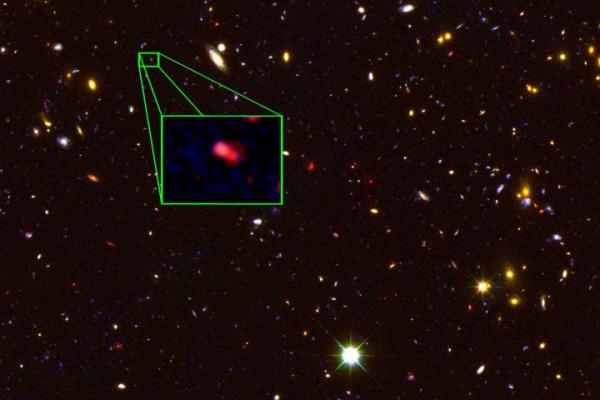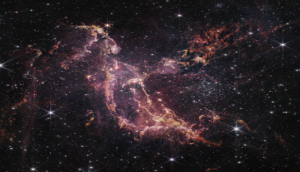
A team of astronomers harnessing the combined power of NASA's Hubble and Spitzer space telescopes have found the faintest object ever seen in the early universe. It existed about 400 million years after the big bang, 13.8 billion years ago.
The team has nicknamed the object Tayna, which means "first-born" in Aymara, a language spoken in the Andes and Altiplano regions of South America.

Though Hubble and Spitzer have detected other galaxies that are record-breakers for distance, this object represents a smaller, fainter class of newly-forming galaxies that until now have largely evaded detection. These very dim objects may be more representative of the early universe and offer new insight on the formation and evolution of the first galaxies.
Thanks to this detection, the team has been able to study for the first time the properties of extremely faint objects formed not long after the big bang, said lead author Leopoldo Infante of Pontifical Catholic University of Chile. The remote object is part of a discovery of 22 young galaxies at ancient times located nearly at the observable horizon of the universe. This research is a substantial increase in the number of known very distant galaxies.
The results are published in the The Astrophysical Journal.
-ANI







![BJP's Kapil Mishra recreates Shankar Mahadevan’s ‘Breathless’ song to highlight Delhi pollution [WATCH] BJP's Kapil Mishra recreates Shankar Mahadevan’s ‘Breathless’ song to highlight Delhi pollution [WATCH]](http://images.catchnews.com/upload/2022/11/03/kapil-mishra_240884_300x172.png)

![Anupam Kher shares pictures of his toned body on 67th birthday [MUST SEE] Anupam Kher shares pictures of his toned body on 67th birthday [MUST SEE]](http://images.catchnews.com/upload/2022/03/07/Anupam_kher_231145_300x172.jpg)






